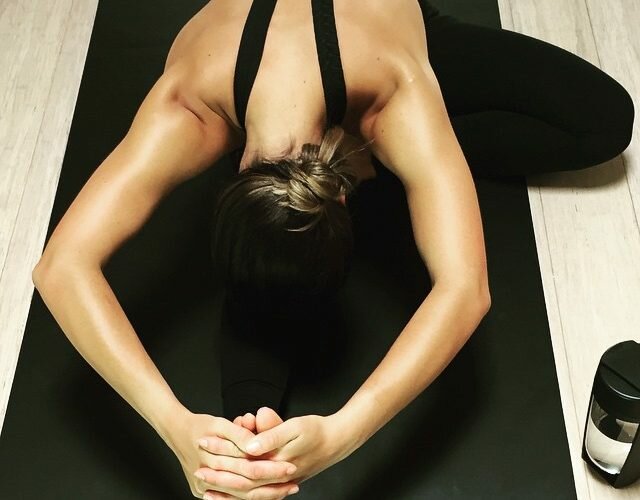Yin Yoga is based on the Traditional Chinese Medicine concept of yin and yang, balancing the opposing forces in the body to create harmony and equilibrium in the body and mind.
In Yoga, Yin is the stable, still, inward turning and unmoving, benefiting the stiff connective tissues (fascia, tendons, ligaments) whilst Yang (most other forms of Yoga in the West) is the more active, flowing, cardio Yoga (strengthening and actively stretching muscles).
Yin yoga works by surrendering and relaxing very gently into a pose (usually on the floor) with no muscle contraction at all for a period of 3-5 minutes. These longer holds in the poses have the specific intention of letting the muscles in the body relax to allow us to go deeper by beneficially stressing the joints, the fascia, tendons and ligaments.
Yin also works on a more subtle energetic level, similar to acupuncture, opening the flow through the meridians (energy channels) of the body, as well as being a deeply meditative and mindfulness based form of yoga.
So, why do we need Yin Yoga?
We live in a very Yang, driven, over-stimulated world where our mind is over-active from constant use of technology, multi-tasking, being bombarded with stimuli and constantly being ‘on’. This constant stream of ‘doing’, and particularly for office workers can lead to the body being consistently in the sympathetic nervous system (the fight or flight response) and thus a constant state of stress. Yin yoga and the mindfulness associated with the practice invite us to bring back that stillness and space within us, dropping back into the parasympathetic nervous system (rest and digest) leading to clearer thoughts, more focus, being more present, less anxiety and stress, and ultimately leading to better mental and physical wellbeing.
What about the physical benefits for office workers?
Desk work can often lead to RSI, stiff neck, sore lower back, and stress related tension in the shoulders, jaw and neck. As important and fulfilling as office jobs can be, our bodies are really not designed to be sedentary for longer periods of time. Many of us are holding tension without even realising it! Tight lower back, can lead to tight shoulder muscles and neck which can then lead to headaches and shallow breathing – shallow breathing ultimately leading to stress and anxiety.
Lets take a quick look at the back and back pain. According to the Australian Institute of Health and Welfare, a whopping 70- 90 percent of Australians will experience back pain in their lives at one time or another. And the people most afflicted by bad backs are sedentary office workers.
When we sit for long periods of time, the discs in the lower spine start to compress, this contracts the ligaments to a shorter length creating more compression and eventually more and more degeneration of the discs. Working out and even yang yoga, do not access the ligaments, whereas this relaxation into the muscles in Yin allows us to gently release on that deeper level leading to less compression on the spine.
So, how will you feel after a Yin class?
Usually absolute bliss! As we generally drop into that deep space of peace and switch to the parasympathetic nervous system (rest and digest), and release the stagnation of chi (energy) by allowing the chi to flow through the meridians, you may have the feeling like you have just had a massage. Some people may feel a little ‘spaced out’ straight after a class, but with plenty of water afterwards the feeling of being clear headed, focused, and calm will follow.
On a physical level, you will feel deeply stretched out, perhaps some neck, shoulder or back pain may leave you, and you may feel able to sit back at your desk without feeling uncomfortable. While Yin is beneficial for most people, it is important to note that some poses will not be suitable for those carrying injuries and severe disk degeneration. Please ensure students check with the teacher prior to class.
Article by Polly Wilson – TWOSIX Yin Yoga Teacher






